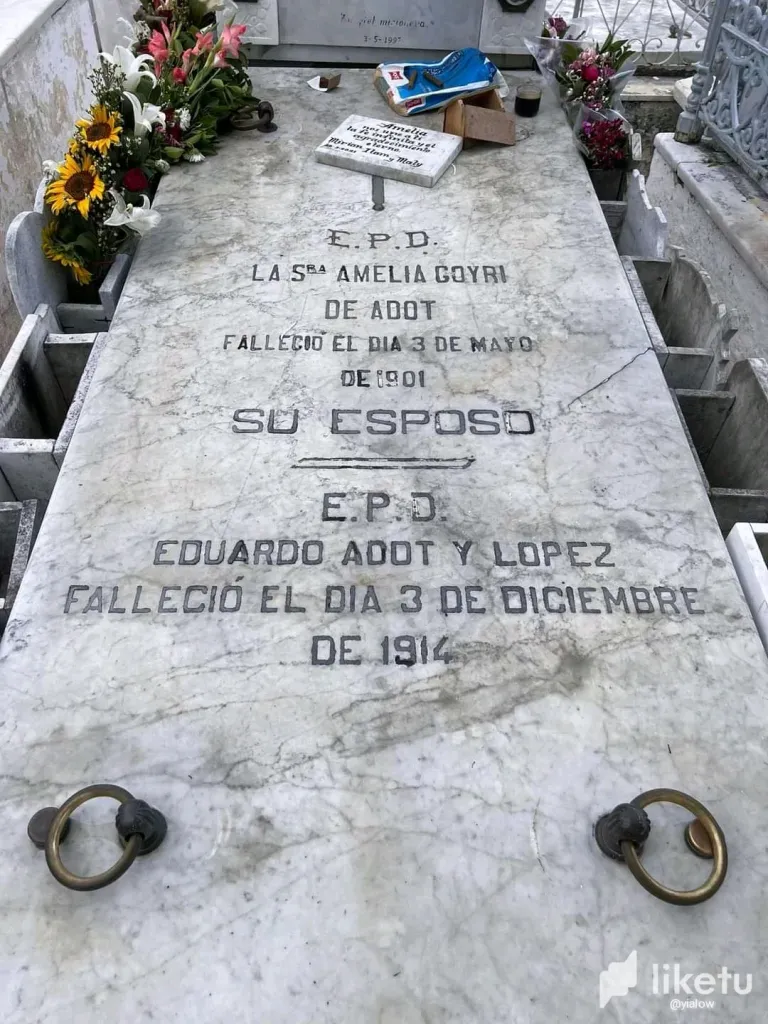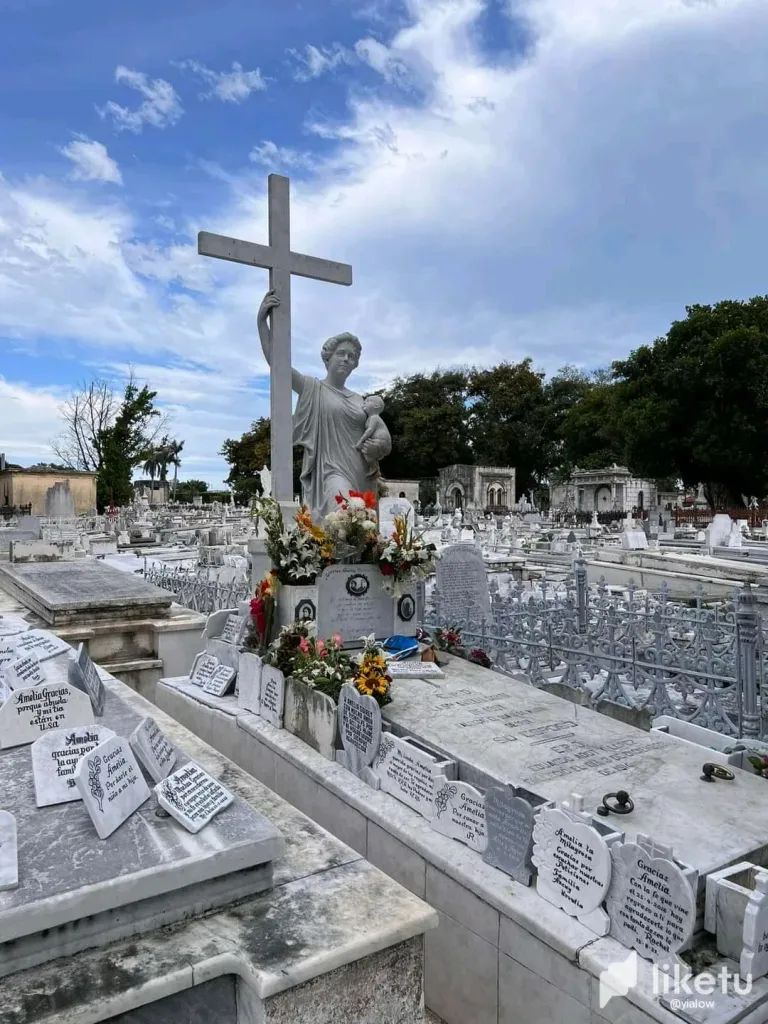



[ESP-ING]
El monumento de Amelia Goyri de Adot, quien recibiera cristiana sepultura en la bóveda situada en el cuadro Noroeste 28, campo común, del cementerio de Colón, Monumento Nacional.
Es esta la tumba más popular y la más visitada de entre tantos hermosos panteones del camposanto habanero. "La Milagrosa", así le llaman los que peregrinan hasta el sitio de su descanso eterno. A este lugar, desde hace más de un siglo, nunca le faltan las flores, los exvotos, y los recuerdos dejados en las visitas de miles de devotos. A Amelia, la milagrosa se le atribuyen “poderes sobrenaturales” desde su muerte de parto en 1901, tal vez por eso el monumento muestra a una mujer con un bebé en brazos.
La escultura fue realizada en mármol de Carrara, en el año 1909, por el artista y amigo del viudo de Amelia, José Villalta de Saavedra, y simboliza la maternidad. El escultor se guió por una foto de la fallecida, el brazo izquierdo de la estatua rodea a un recién nacido y el derecho se apoya en una cruz latina, considerada el supremo símbolo del sacrificio.
Fotos de mi autoria
Traductor : DeepL
The monument of Amelia Goyri de Adot, who received Christian burial in the vault located in the Northwest 28, common field, of the Colon Cemetery, National Monument.
This is the most popular and most visited tomb among the many beautiful pantheons of the Havana cemetery. "La Milagrosa", as it is called by those who make a pilgrimage to the site of her eternal rest. For more than a century, this place has never lacked flowers, votive offerings and souvenirs left by thousands of devotees. The miraculous Amelia has been attributed "supernatural powers" since her death in childbirth in 1901, perhaps that is why the monument shows a woman with a baby in her arms.
The sculpture was made in Carrara marble in 1909 by the artist and friend of Amelia's widower, José Villalta de Saavedra, and symbolizes motherhood. The sculptor was guided by a photo of the deceased, the left arm of the statue surrounds a newborn baby and the right arm rests on a Latin cross, considered the supreme symbol of sacrifice.
Photos of my authorship
Translator : DeepL
For the best experience view this post on Liketu